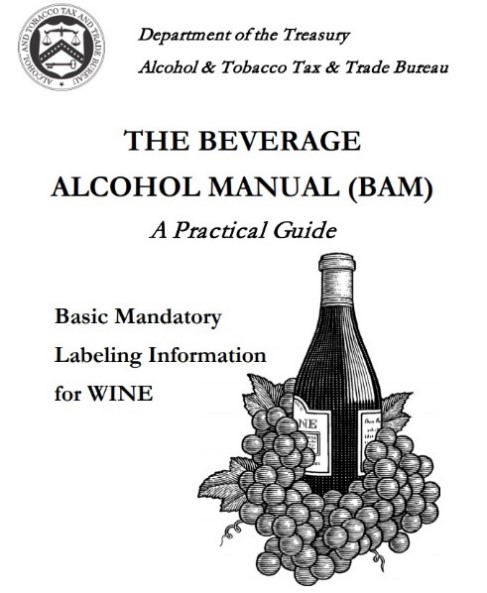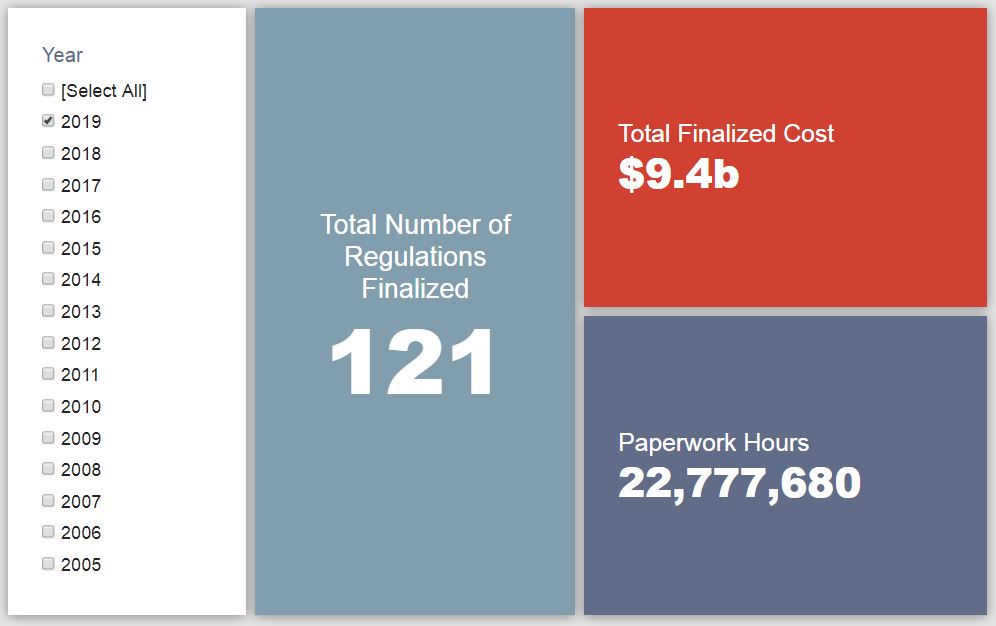Week in Regulation
July 8, 2019
July Starts Off with a Deregulatory Bang
After a couple of weeks that saw net-cost totals, last week’s regulatory tally swung back into the cost-cutting territory. Two rules from the Department of Education (ED) and Environmental Protection Agency (EPA) led the way in that regard. Across all proposed and final rules, agencies published $628.3 million in total net cost savings and cut 6.9 million hours of paperwork.
REGULATORY TOPLINES
- New Proposed Rules: 46
- New Final Rules: 73
- 2019 Total Pages: 32,192
- 2019 Final Rule Costs: $9.4 Billion
- 2019 Proposed Rule Costs: $1.7 Billion
TRACKING THE REGULATORY BUDGET
The most significant deregulatory action of the week was a direct final rule from EPA regarding “Standards of Performance for Stationary Compression Ignition Internal Combustion Engines.” The rule “revises the emission standards for particulate matter for new stationary compression ignition engines located in remote areas of Alaska.” EPA expects this action to provide total cost savings of nearly $323 million. The agency promulgated it as a direct final rule because they consider it a “noncontroversial action and do not anticipate significant adverse comment.” There is a parallel proposed version published concurrently that would continue the rulemaking process if proper objections are filed.
The other notable rule with implications for the fiscal year (FY) 2019 regulatory budget under Executive Order (EO) 13,771 is a rule out of ED. This rule finalizes the Trump Administration’s version of the “Gainful Employment” regulations and rescinds an Obama-era rule on the subject. The agency estimates that this would cut 6.9 million hours of paperwork, thereby saving affected entities roughly $209 million in associated costs. This is the first finalized deregulatory action with quantified savings out of ED for FY 2019.
So far in FY 2019 (which began on October 1, 2018), there have been 53 deregulatory actions (per the rubric created by EO 13,771 and the administration’s subsequent guidance document) against 27 rules that increase costs and fall under the EO’s reach. Combined, these actions yield quantified net costs of roughly $10.3 billion. This total, however, includes the caveat regarding the baseline in the Department of Agriculture’s “National Bioengineered Food Disclosure Standard.” If one considers that rule to be deregulatory, the administration-wide net total is approximately $3.6 billion in net costs. The administration’s cumulative savings goal for FY 2019 is approximately $18 billion.
THIS WEEK’S REGULATORY PICTURE
This week, deregulating the standards of fill for wine and distilled spirits.

The Alcohol and Tobacco Tax and Trade Bureau (TTB) proposed two rules this week that would remove most of the standards of fill requirements for wine and distilled spirits. Under current regulations, the fill levels in bottles must meet one of a series of government-specified amounts. For example, distilled spirits must be filled to either 1.75 liters (L), 1 L, 750 milliliters (mL), 500 mL, 375 mL, 200 mL, 100 mL, or 50 mL.
This scheme was originally developed to aid with the collection of taxes related to alcohol production. TTB no longer relies on these standard fill measurements to calculate tax owed by producers, however. Some producers have petitioned TTB for years asking to relax these standard measurements as they complicate their ability to fill bottles for different markets. As an example, TTB notes in its proposed rule related to distilled spirits that while 750 mL is a standard fill amount in the United States, in Europe the closest standard fill is 700 mL. Complying with both standards requires alcohol manufacturers and bottlers to reconfigure packaging and equipment, which can impose costs.
To help address these issues, TTB is proposing to get rid of the standards of fill except for a minimum of 50 mL for wine and distilled spirits and a maximum of 3.785 L for distilled spirits. Producers could fill their vessels with any amount as long as the amount is appropriately labeled on the package. This would help producers selling distilled spirits in the United States and Europe by allowing them to make one-sized container with one fill level for both locations (such as 700 mL in the example above).
TTB cites other benefits to the proposed changes, including opening up the U.S. market to primarily foreign producers that have chosen not to meet the existing fill standards, and allowing consumers to “more closely match the quantities they purchase to the quantities they desire to consume.”
TOTAL BURDENS
Since January 1, the federal government has published $11.1 billion in net costs (with $9.4 billion in finalized costs) and 25.8 million hours of net paperwork burden increases (with 22.8 million coming from final rules). Click here for the latest Reg Rodeo findings.












